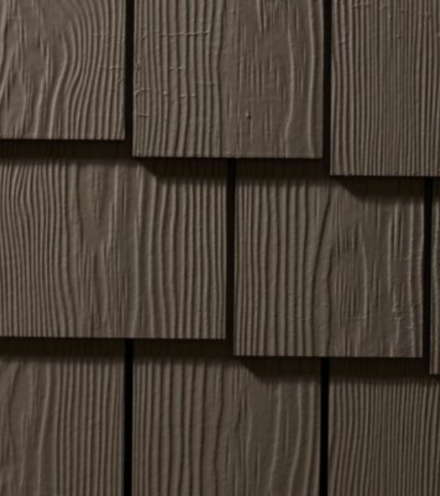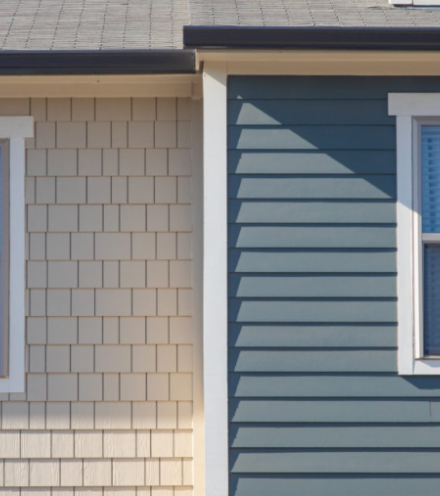Siding is one of the most important parts of your home. It not only helps create your building envelope and protects your home from the elements, it’s also a big part of your home’s value and its curb appeal.
So, it makes sense that when the time comes to replace your siding, you’re going to want to compare many factors. These factors will likely include the appearance of the siding, as well as its maintenance and durability. For many people, there will also be the cost of the siding you choose that will play a role in determining which one you ultimately install.
Siding can have a wide range of costs depending on the style, the material, the color, and how decorative you’re getting. The size and style of your home can also play a role, which can make it difficult to get an exact cost for your home’s siding without having a qualified installer take a look.
It is possible to get a general idea of the cost of the siding, however, as well as the long term costs of the siding you choose, which will impact your budget not only at installation but over the lifetime of the siding as well.
Basic Siding Cost Comparisons
The three materials that homeowners generally end up comparing in costs, durability, looks, and maintenance are wood, vinyl, and fiber cement. According to HomeAdvisor, the three materials are actually not that different from one another when it comes to the final installed cost. Of the three, vinyl is the least expensive at an average cost of $9,942 while wood is the most expensive at an average of $12,500. Fiber cement falls between the two with a national average of $11,509. All costs are for the material completely installed on a 2,000 sq.ft. home with no complications or issues.
Things that can impact these costs - making your total figure higher or lower - include the condition of your current siding and how hard it is to remove, the exact style and finish of the siding you choose, how many stories your home has, and any architectural differences that may mean additional trim or other oddities. These items can raise or lower the total cost of the project by several thousand dollars, which is why it’s always best to speak to a certified installer once you’ve selected your material.
Ongoing Cost Comparisons
The initial cost of your siding is only one factor that you need to consider. Siding is one of the parts of your home that is constantly exposed to the elements - to wind, rain, snow, sun, and debris. It, therefore, needs to not only look good and complement your home’s style and architecture, but it also needs to hold up well to your climate. Years of exposure to the elements can have an impact on the total costs associated with your siding - including maintenance, repairs, and replacement costs.
Wood Siding Considerations
Wood siding has some of the highest maintenance, and therefore maintenance-related costs, of the three types of siding. Wood needs to be kept painted in order to protect it from the elements, but that paint can easily crack, chip, and peel over time. When this happens, the wood can be exposed to moisture and insect activity, which can lead to damage. Therefore, wood siding needs to be painted or stained every few years, adding to its overall costs.
Occasionally, some boards may need to be replaced if moisture or insects have damaged the wood to the point where it can no longer function in protecting your home.
Vinyl Siding Considerations
Vinyl siding is lower maintenance than wood, but still has some issues with durability and longevity that can increase its overall costs as well. Vinyl has issues with softening, melting, and warping in the sun, as well as when in extreme heat. So, vinyl siding installed in hot climates may mean that it requires more frequent repair.
The material can also become more brittle in the cold, which can lead to cracks or holes in the siding. When this happens, the only repair is to replace the damaged planks with new ones, which increases the cost of the project.
Fiber Cement Considerations
Of the three materials, only fiber cement has very low long term costs. The color doesn’t fade, chip, or crack like wood, so it doesn’t need to be frequently scraped or repainted. It’s also moisture resistant and insect activity and does well in a range of climates, including those that can lead to damage of vinyl siding. Adding in the fact that fiber cement siding lasts for 30 or more years, your long term costs with this project can be much lower than when using other materials.
Choose the Right Siding for Your Home and Budget
When choosing a new siding, it’s important to consider not only the current costs but also those going forward. You want your new siding to continue to look and perform as well as it does on the day it was installed. Of the three most popular materials, only fiber cement does this, and without adding to your budget year after year. Choose fiber cement siding for your home to ensure long-lasting beauty and protection from the elements, as well as long-lasting savings on maintenance and repair.




